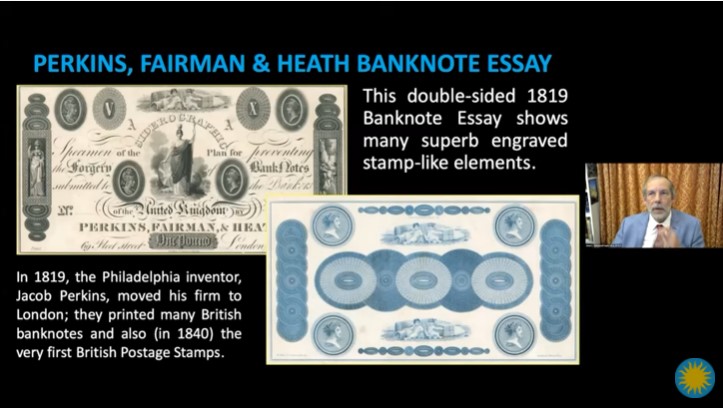The origins of the postage stamp can be traced to a time long before the 19th century. The talk – illustrated with a selection of items from Grimwood-Taylor’s collections – briefly covered the origins of writing and of postal rates, before tracing the origins of postage stamps from their roots in the very first (Revenue) stamps of the 17th century. The ancient Sumerians, the Italian merchants of the 14th to 16th centuries, the 17th-century Anglo-Dutch revenue authorities, and the 18th-century Colonial American local Revenue stamps were all included.
The explosion of postal rates in the 18th and 19th centuries, fueled by the wartime-raising of taxes in Britain and its American colonies, and later the United States, lasted long after peace was declared. It led reformers, such as Rowland Hill and others, to campaign for the introduction of cheap postage and to study how such a dramatic change could be made financially and administratively viable; they turned for an answer to revenue stamps for a postage prepayment model.
The talk concluded with a look at First Issue covers of the U.S., Switzerland, Brazil, Finland, Indonesia, Russia, and Trinidad in order to take the story up to July 1847.

